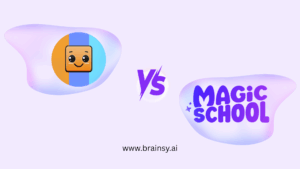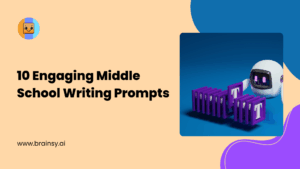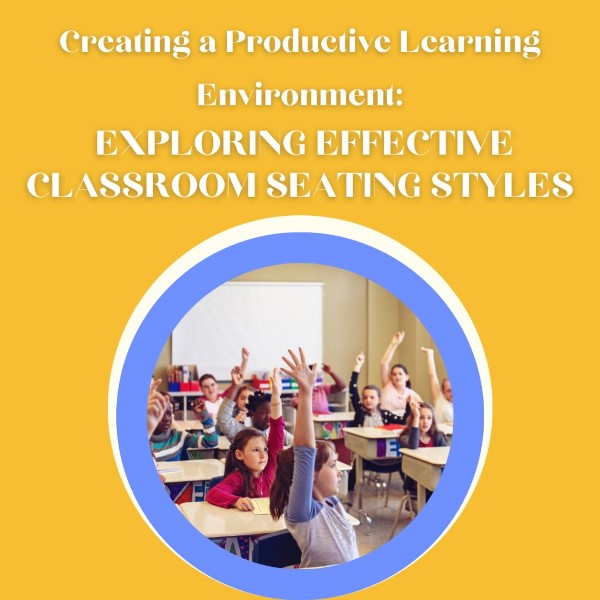
The Importance of Classroom Seating Styles
As an educator, I’ve consistently emphasized crafting a classroom environment conducive to learning to bolster academic success. Implementing a classroom seating strategy that includes well-thought-out classroom seating styles for 30 students can significantly influence student engagement, collaboration, and overall academic performance. A strategic classroom desk arrangement is a critical element that affects students’ focus, comfort, and interaction with teachers and classmates.
Understanding the Impact of Different Seating Styles
Traditional Desk Seating vs. Alternative Seating Options
Previously, the traditional classroom style seating, with rows of desks all facing forward, was standard, offering minimal flexibility. However, modern research suggests that this rigid classroom style may not cater to the varied needs of every student. As a result, classroom layouts have transformed, paving the way for innovative designs that encourage a dynamic and adaptable learning environment.

Unleashing the Power of Modern Seating Styles with Brainsy AI
Exploring innovative teaching strategies becomes paramount in the ever-evolving landscape of education, where classroom dynamics play a pivotal role. Just as choosing the right seating style can greatly impact student engagement and collaboration, integrating technology-driven solutions adds a layer of dynamism to the learning experience.
Brainsy AI, our cutting-edge educational platform, seamlessly aligns with these modern teaching approaches. By leveraging AI technology, Brainsy AI transforms traditional classroom settings, offering personalized learning experiences that cater to individual student needs
Different Types of Classroom Seating Arrangements
Today, educators can choose from an array of effective classroom seating arrangements for 30 students, each tailored to different teaching styles and learning needs. In this discussion, we will delve into some of the most prevalent configurations at our disposal:
Traditional Rows
This time-honored classroom desk arrangement aligns desks for focused lectures and solo work, symbolic of a disciplined educational setting, promoting individual attention and streamlined instruction.
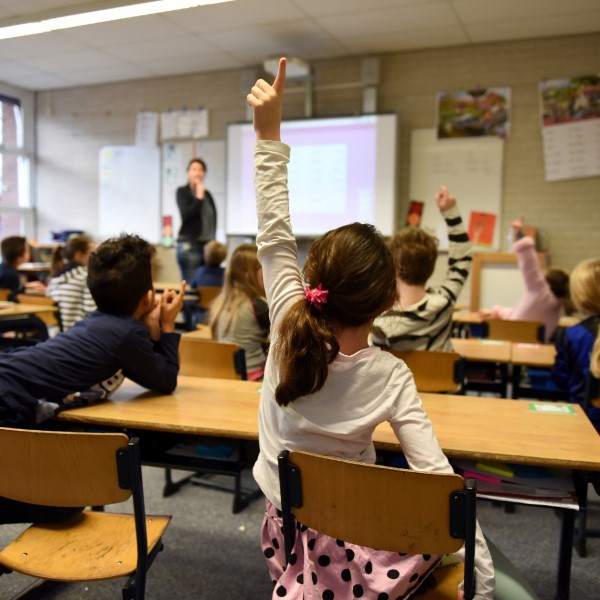
Clusters
Clusters: Innovative desk arrangement involves grouping desks, fostering community, and facilitating small group work for collaborative tasks and lively discussions, a testament to the versatility of classroom desk arrangements.

U-Shape Seating Style
U-Shape Seating Arrangement: Desks in a U-shape create an inclusive atmosphere, effective for stimulating discussions and presentations, playing a crucial role in classroom management and engagement.

Standing Desks
Standing Desks: A modern alternative promoting better posture, focus, and circulation, bringing innovation to contemporary educational spaces, and supporting active learning.

Fishbone Seating Style
Fishbone Seating: Integrating classroom seating innovations like the Fishbone arrangement can invigorate the educational environment, turning it into a dynamic and interactive space. This layout, mirroring a fish’s skeletal design, not only propels the flow of energy but also significantly amplifies student engagement.
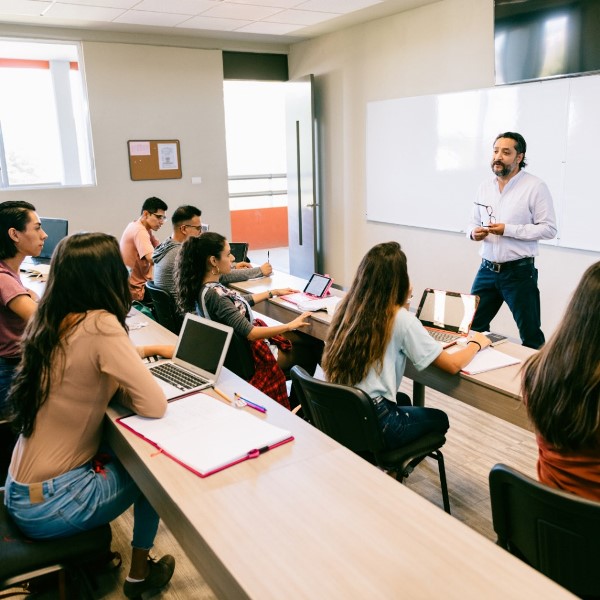
Starburst Seating Style
Starburst Seating: The Starburst classroom seating configuration, so named for its star-like spread, is a stellar example of how arranging desks can promote inclusivity and teamwork. With desks fanning out from a central hub, teachers can effortlessly engage with each pupil. This star-inspired layout bolsters a sense of collaboration and guarantees that all students have an unobstructed view of the instructor, creating an environment ripe for active participation.
Zoning Seating Style
Zoning Seating: Adopting zoning classroom seating within desk arrangement strategies can be transformative, segmenting the classroom into areas suited for diverse activities or learning preferences. This methodical seating plan fosters a flexible and orderly educational setting, addressing the varied requirements of students by allocating zones for particular types of engagement.
Jigsaw Seating Style
Jigsaw Seating: Facilitates group dynamics and small group discussions by assembling individual desks into larger, cooperative units. This arrangement bolsters a unified learning atmosphere where teamwork and collaborative study are greatly emphasized, making it a perfect fit for project-driven learning.
C-shape Seating Style
C-shape Seating: Harmonious blend of individual focus and group interaction, ideal for direct instruction and group activities, offering a multifaceted learning environment that adapts to a variety of instructional styles.
Curved Row Classroom Seating Style
Curved Row Seating: An inventive twist on traditional layouts, positions desks in gentle arcs to enhance sightlines and encourage student exchanges. This desk arrangement strategy excels during discussions and collaborative tasks, as it nurtures a communal atmosphere and bolsters the inclusive character of the classroom.
Patchwork Seating
Patchwork Seating: Embraces diversity with multiple seating options, empowering students to choose positions that suit their needs. This method combines different seating configurations, addressing the diverse needs and learning approaches of students. It allows learners the autonomy to choose their optimal seating position, thus enriching their educational journey.
Tree Seating
Tree Seating: Transforming a classroom with innovative classroom seating, such as tree seating integrated into desk arrangement ideas, can create a visually captivating and highly functional educational space. This creative approach to classroom arrangement ideas is tailored to boost both individual and group work efficiency, with each ‘branch’ serving as a dedicated collaborative seating area.
Pyramid Seating
Pyramid Seating: Tiered rows create a pyramid-like structure, enhancing visibility and engagement during presentations. This strategic classroom layout is particularly beneficial during presentations and class discussions, as it ensures that every student has an unobstructed view.
Crossroads Seating
Crossroads Seating: Utilizes a cross-shaped pattern for multiple focal points, facilitating transitions between different teaching methods and group activities.
Diamond Cluster Seating
Diamond Cluster Seating: Merges collaborative benefits with geometric appeal, fostering teamwork and visual elegance. This classroom layout idea not only fosters teamwork but also enhances the classroom’s visual appeal.
Color-Coded Zones
Color-Coded Zones: Organizes the classroom for specific activities, optimizing the learning environment for various tasks.
How to Create a Seating Plan That Promotes Engagement and Collaboration
Crafting effective classroom seating and classroom desk arrangement is pivotal in optimizing student interaction and educational outcomes. By weaving creative desk arrangement ideas into classroom management, educators can establish a productive and captivating learning atmosphere.
Know Your Students
To foster a supportive classroom community, recognizing students’ learning styles and personalities is essential, which can guide the development of preferential seating strategies. A seating plan that is considerate of student learning can strengthen peer support and amplify collaborative efforts, thereby nurturing relationships within the classroom.
Balance and Variety
To achieve a harmonious classroom setup, incorporating classroom management strategies that balance individual and group work areas is crucial. Classroom organization that promotes fair access to classroom resources and supports open communication is essential for a cohesive learning community. Additionally, integrating classroom seating options that cater to diverse learning styles can significantly enhance the educational space’s design and functionality.
Flexibility and Adaptability
By weaving in a variety of classroom seating options, your classroom transforms into a dynamic and adaptable learning environment. Keeping your classroom design in sync with progressive teaching methods and student-centered activities is key to improving classroom management and boosting student adaptability and engagement.
Benefits of Flexible Seating in the Classroom
Adopting innovative classroom setup ideas, such as flexible classroom seating, can dramatically boost student engagement and streamline the learning process. The extensive benefits of this approach contribute to a more interactive and efficient educational atmosphere, with students becoming noticeably more involved and attentive.
Improved Engagement
Flexible classroom seating arrangements grant students a say in shaping their learning environment, which can have a positive effect on learning dynamics and engagement strategies. This level of autonomy often results in heightened comfort and motivation, as students take an active role in designing their classroom experience, including the selection of their desks.
Enhanced Collaboration
Innovative classroom seating configurations, like small group work setups with classroom desks, encourage enhanced collaboration and build a strong classroom community. These interactive layouts are ideal for group work, fostering a culture where idea-sharing and collective learning thrive.
Better Focus and Attention
Incorporating alternative classroom seating options, such as flexible seating, can be a transformative move in enhancing student focus. Offering choices like stability balls or standing desks empowers students to choose seating that optimizes their concentration, thus supporting active learning activities and prolonging attention spans.
Factors to Consider When Choosing a Seating Configuration
When setting classroom goals, selecting effective classroom seating arrangements that align with your teaching style and meet student needs is paramount. Considering these critical factors will help in establishing a seating environment that truly enriches the learning experience.
Classroom Layout
Optimizing classroom space is crucial, and incorporating classroom seating layouts that facilitate easy movement, clear sight lines, and efficient space utilization is key. These components are the cornerstone of a dynamic learning environment and are essential for effective classroom desk arrangement strategies.
Classroom Activities
Customizing your classroom desk arrangements to accommodate various activities, from group projects to solo work, is a strategic move. Adapting classroom seating configurations to complement each teaching style can dramatically improve learning outcomes.
Student Preferences
Involving students in the decision-making process for classroom seating chart options can lead to increased engagement and responsibility. Such involvement is instrumental for monitoring student progress and can enhance the learning experience by offering insights into the advantages and drawbacks of different seating layouts.
Implementing and Managing Effective Classroom Seating Styles
Strategic planning and continuous evaluation form the foundation of effective classroom seating arrangements. These practices are a key focus of teacher workshops for professional development and are crucial for the successful implementation and management of classroom procedures to achieve educational goals.
Clear Expectations
For effective classroom management, it’s essential to establish and communicate clear procedures and expectations. Participating in professional development through a Classroom Management Online Course and receiving consistent teacher assistance in enforcing these guidelines are critical for managing seating decisions and creating a supportive learning environment.
Flexibility and Adaptability
It’s important to maintain flexibility in seating adjustments and to embrace flexible seating options while considering student feedback. Conducting regular assessments of your classroom setup’s impact is vital for optimizing seating arrangements and nurturing a positive academy atmosphere that enhances student engagement and learning outcomes.
Regular Communication
Encourage open dialogue in your classroom, prompting students to express their opinions on classroom seating arrangements. Committing to regular check-ins ensures that student preferences are acknowledged, improving their educational journey and fostering effective parent communication, especially in the realm of synchronous online learning.
How Arrangements Affect Student Mindsets
Understanding the impact of classroom seating on student mindsets is crucial, as the physical environment significantly influences their attitudes and behaviors. By strategically employing classroom seating styles, educators can cultivate a sense of ownership and empowerment, which in turn boosts motivation and academic achievement. Moreover, maintaining regular communication and being flexible with seating adjustments are key to fostering collaboration and ensuring the learning space evolves to support student engagement and development.
The Power of Group Seating
The strategic implementation of Classroom Seating Arrangements, such as group seating, is instrumental in enhancing collaboration and peer interaction. By arranging students in groups, educators can effectively nurture teamwork, communication, and problem-solving abilities. Group seating not only propels students to take charge of their learning journey but also builds a community within the classroom, promoting academic growth in a dynamic and interactive setting.
The Rise of Standing Desks in Education
Keeping abreast of Classroom Seating Arrangements trends is vital for educators, with the adoption of standing desks being a notable development. These desks offer a plethora of advantages, such as heightened focus, increased calorie expenditure, and improved posture. Integrating standing desks into the classroom environment can lead to a more health-conscious and engaging learning space, fostering both physical activity and mental alertness for an enriched educational experience.
The Vibrancy of Fishbone Seating Arrangements
The unique design of Fishbone Seating Arrangements brings vibrancy to the classroom by enhancing individual focus and reducing distractions. Arranging desks diagonally not only creates a visually appealing and interactive space but also facilitates active participation and seamless collaboration. Implementing fishbone seating in your classroom can significantly elevate student engagement and transform the learning area into a lively and dynamic educational hub.
What more amazing teacher resources? Check out our blog on the 17 best podcasts for teachers!
Wrapping it all up
Acknowledging the importance of this discussion, I urge educators to explore a variety of Classroom Seating Arrangements, such as stadium and U-Shape configurations, in both in-person classroom settings and virtual platforms. Leverage Zoom’s breakout rooms and screen sharing to boost interactive learning and student involvement. I also invite you to share your insights and experiences in the comments, helping to illuminate the path for fellow educators seeking to optimize their teaching spaces, whether they are physical or virtual.


